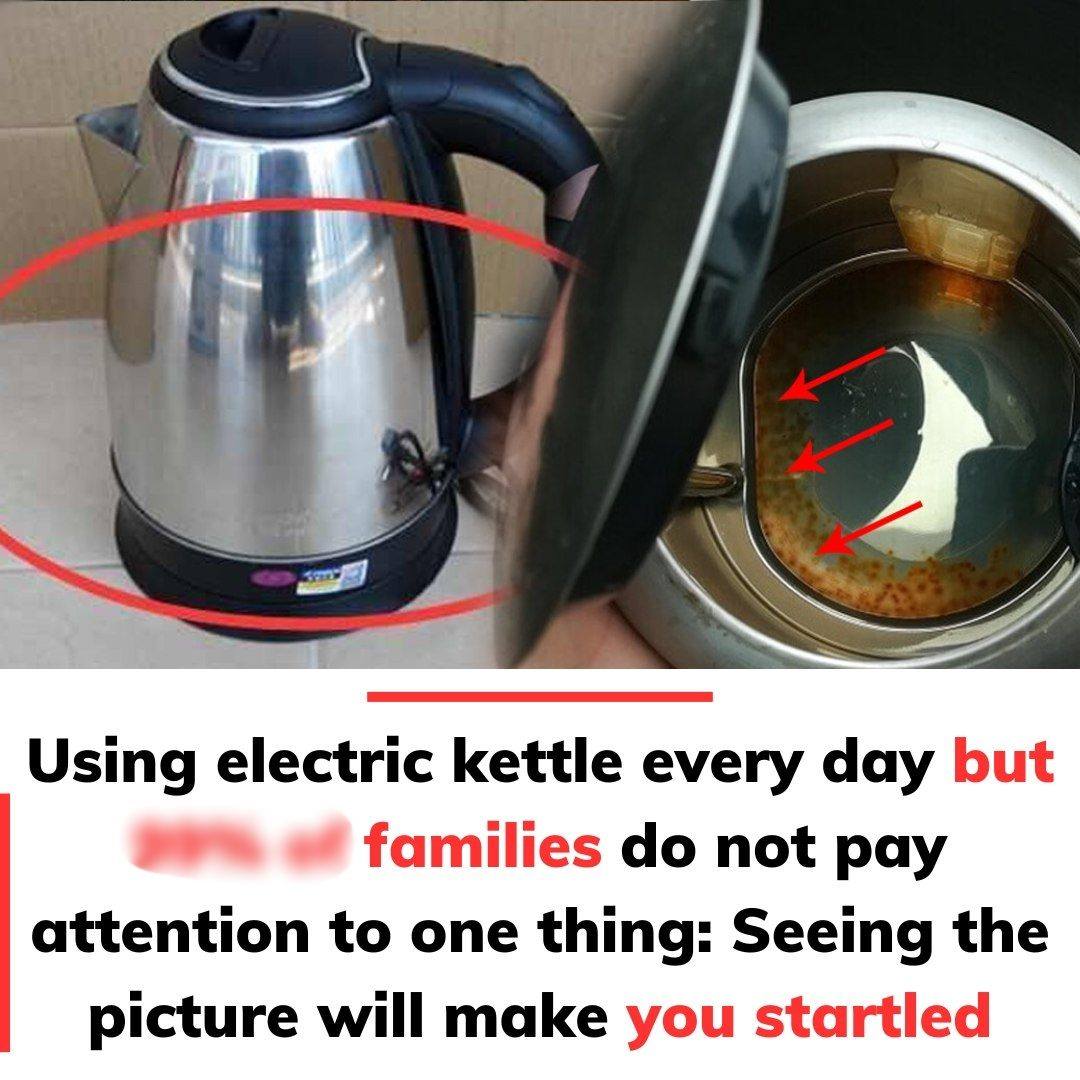ADVERTISEMENT
Using an Electric Kettle Every Day? Many Families Overlook This One Crucial Thing—Seeing the Picture Will Startle You!
Electric kettles have become a staple in modern kitchens, beloved for their speed and convenience. Whether it’s boiling water for a morning cup of coffee, making tea, or preparing instant meals, an electric kettle can be found in nearly every household. It’s quick, efficient, and easy to use—what’s not to love?
However, there’s one crucial thing that many families overlook when using their electric kettle daily. If you’ve been using your kettle without giving it much thought, seeing this will likely startle you—and might just change the way you approach your everyday kettle routine.
The Hidden Issue: Limescale Buildup
One of the most common problems with frequent use of an electric kettle is limescale buildup. This occurs when minerals in hard water—such as calcium and magnesium—accumulate inside the kettle as it heats water. Over time, this can result in a layer of hard, chalky residue forming on the heating element or kettle interior, leading to several issues that might surprise you.
What is Limescale?
Limescale is a hard, chalky deposit that builds up when hard water is heated. It’s composed mainly of calcium carbonate, which precipitates out of the water as it boils. While limescale itself is not harmful to health, its presence in your kettle can significantly impact its performance and longevity.
Why You Should Care About Limescale Buildup
- Reduced Efficiency: Limescale acts as an insulating layer around the heating element of the kettle, which can make it less effective at heating water. This means your kettle will take longer to boil, wasting both energy and time.
- Shortened Kettle Lifespan: If left untreated, limescale can damage the heating element and the kettle’s interior. Over time, this buildup can lead to more serious issues, requiring costly repairs or even replacement.
- Unpleasant Taste: When limescale deposits accumulate, they can affect the taste of the water boiled in your kettle. This is especially noticeable if you’re boiling water for tea or coffee, where the taste of minerals can impact the flavor of your beverages.
- Aesthetically Unappealing: The buildup of limescale on the inside of your kettle can look unsightly. This not only affects the aesthetic appeal of your kitchen but also indicates neglect in regular cleaning and maintenance.
- Potential Health Risks: While the limescale itself isn’t harmful, over time, the build-up can harbor bacteria and mold, especially if the kettle isn’t dried properly after use. This can be a breeding ground for germs that may eventually contaminate the water you drink.
What You Might Not Realize
The picture you see when you look inside an electric kettle with significant limescale buildup can be startling. If the limescale is left untreated for too long, it can create an unsightly layer of chalky deposits that can even clog the spout, making it difficult to pour water. In some cases, it can cause the kettle to malfunction completely.
While most people clean the outside of their kettle or rinse it out quickly after use, the inside is often neglected. This lack of attention can lead to the accumulation of mineral deposits, resulting in the problems mentioned above.
How to Prevent and Clean Limescale Buildup
The good news is that cleaning limescale from your kettle is simple, and there are a few effective ways to keep your electric kettle in top condition. Here are some tips to prevent and clean limescale buildup:
1. Use a Descaler Regularly
A commercial descaler is a product designed specifically to remove limescale from appliances like kettles. Follow the manufacturer’s instructions for the best results. Typically, you’ll fill the kettle with the descaling solution, let it sit for a while, and then rinse thoroughly.
2. DIY Cleaning with Vinegar or Lemon
If you don’t want to use a commercial product, you can use white vinegar or lemon juice as a natural descaler. Fill the kettle with a solution of equal parts water and vinegar (or lemon juice), and let it sit for an hour. Then, boil the mixture and scrub the inside gently with a soft sponge. Rinse thoroughly with clean water.
For Complete Cooking STEPS Please Head On Over To Next Page Or Open button (>) and don’t forget to SHARE with your Facebook friends
ADVERTISEMENT
ADVERTISEMENT
